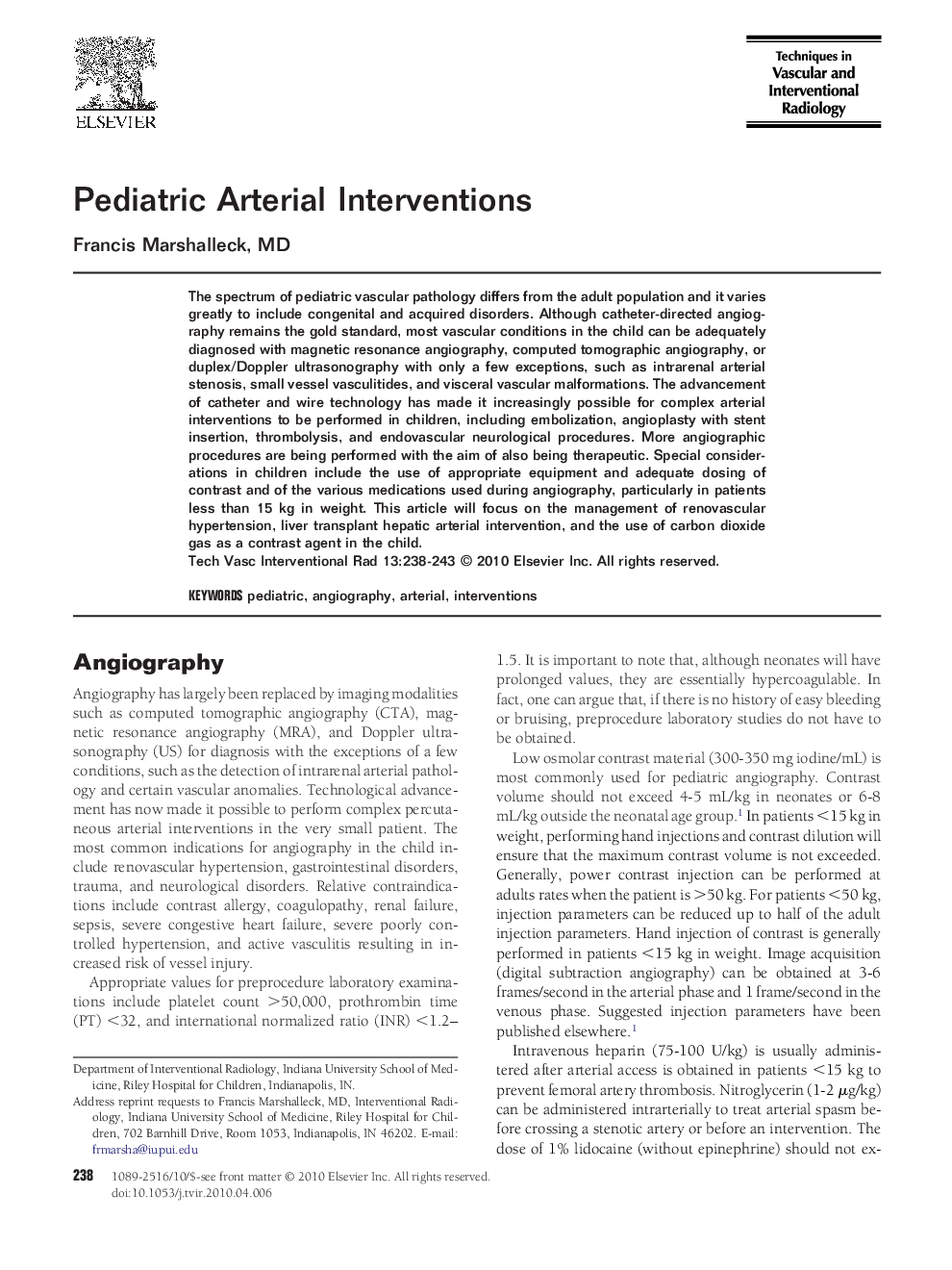| Article ID | Journal | Published Year | Pages | File Type |
|---|---|---|---|---|
| 4251779 | Techniques in Vascular and Interventional Radiology | 2010 | 6 Pages |
The spectrum of pediatric vascular pathology differs from the adult population and it varies greatly to include congenital and acquired disorders. Although catheter-directed angiography remains the gold standard, most vascular conditions in the child can be adequately diagnosed with magnetic resonance angiography, computed tomographic angiography, or duplex/Doppler ultrasonography with only a few exceptions, such as intrarenal arterial stenosis, small vessel vasculitides, and visceral vascular malformations. The advancement of catheter and wire technology has made it increasingly possible for complex arterial interventions to be performed in children, including embolization, angioplasty with stent insertion, thrombolysis, and endovascular neurological procedures. More angiographic procedures are being performed with the aim of also being therapeutic. Special considerations in children include the use of appropriate equipment and adequate dosing of contrast and of the various medications used during angiography, particularly in patients less than 15 kg in weight. This article will focus on the management of renovascular hypertension, liver transplant hepatic arterial intervention, and the use of carbon dioxide gas as a contrast agent in the child.
